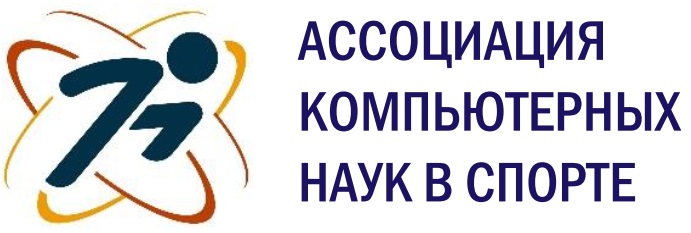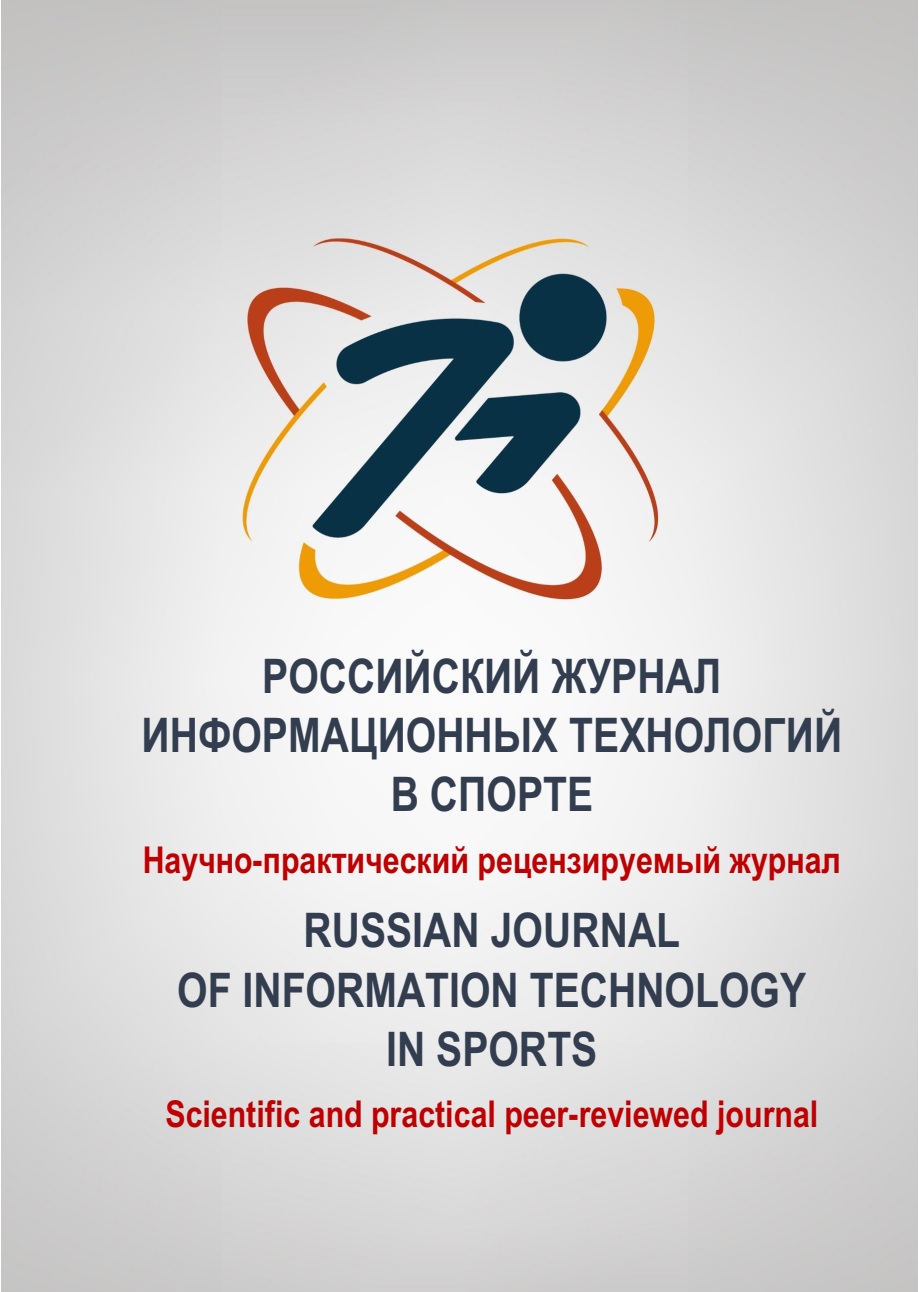Moscow, Russian Federation
VAK Russia 1.2.1
VAK Russia 3.1.33
VAK Russia 5.8.4
VAK Russia 5.8.5
VAK Russia 5.8.6
UDC 796/799
UDC 355.233.22
UDC 00
CSCSTI 77.00
CSCSTI 20.00
Russian Classification of Professions by Education 09.00.00
Russian Classification of Professions by Education 32.00.00
Russian Classification of Professions by Education 39.00.00
Russian Classification of Professions by Education 44.00.00
Russian Library and Bibliographic Classification 3
Russian Library and Bibliographic Classification 58
Russian Library and Bibliographic Classification 75
Russian Trade and Bibliographic Classification 5
Russian Trade and Bibliographic Classification 7
BISAC COM021000 Databases / General
BISAC COM023000 Educational Software
BISAC COM025000 Expert Systems
BISAC COM074000 Hardware / Mobile Devices
BISAC COM079010 Human-Computer Interaction (HCI)
BISAC COM032000 Information Technology
The relevance of automating exercise monitoring is due to the increasing need for online fitness programs, the use of artificial intelligence to analyze exercise techniques and encourage users to engage in fitness classes through convenient digital platforms that contributing to the effectiveness of training. Objective. Development and implementation of a technical solution for monitoring physical activity during training sessions using a mobile phone and a computer using artificial intelligence and computer vision technologies. Methods. The proposed solution used the MediaPipe Pose Detection computer vision framework, whose neural networks are pre-trained on a large amount of data and can accurately handle the task in situations with different backgrounds, clothes and people. Results. A technical solution has been developed - the FORA VISION online platform (https://fora.vision), which is based on neural networks trained on a labeled dataset of physical exercises, which allows you to automatically track the performance of exercises and calculate their number. Conclusion. Motion recognition and evaluation technology is applicable in various fields, from conducting distance physical education classes in educational institutions to therapeutic and industrial gymnastics, as well as for self-development of basic movement skills in various sports and professionally applied fields.
artificial intelligence in physical education and sports, computer vision technologies in sports, automatic exercise monitoring, remote physical education classes, personalized approach to sports
1. Egorova N.M. Digitalization of Russian sports: problems and prospects. Izvestiya St. Petersburg State University of Economics, 2022, 4(136), pp. 102-106. (in Russ.) EDN: https://elibrary.ru/klxwzq
2. Zhdanovich D.O., Semenov M.M. Analysis of the current state of the phygital movement in the Russian Federation and prospects for its development until 2030. Physical Education and University Sport, 2024, 3(3), pp. 232-236. (in Russ.) DOI: https://doi.org/10.18500/2782-4594-2024-3-3-232-236 EDN: https://elibrary.ru/grjxyy
3. Pleshakov V.A. Digitalogy: Homo sapiens cyberus became Homo sapiens phygitalis. Bulletin of the National Library of Railways, 2024, 1(59), pp. 67-76. (in Russ.) EDN: https://elibrary.ru/sueqmz
4. Government of the Russian Federation. (2024, November 22). Decree No. 3387-r ”On approval of the Concept for the development of the phygital movement in the Russian Federation for the period until 2030”. (in Russ.) URL: http://government.ru/docs/53601/
5. Akhmerova K.Sh., Timme E.A. Integration of the educational process and sports training at the university in the context of digital transformation. Physical education and student sports, 2023, 2(3), pp. 263-267. (in Russ.) DOI: https://doi.org/10.18500/2782-4594-2023-2-3-263-267 EDN: https://elibrary.ru/bybzbq
6. Cippitelli E., Gasparrini S., Gambi E., Spinsante S. A human activity recognition system using skeleton data from RGBD sensors. Computational Intelligence and Neuroscience, 2016, Article 4351435, pp. 1-14. DOI: https://doi.org/10.1155/2016/4351435
7. Rahmani H., Mahmood A., Huynh D.Q., Mian A. HOPC: Histogram of oriented principal components of 3D pointclouds for action recognition. In: Computer Vision - ECCV 2014: 13th European Conference on Computer Vision. 2014 Sep 6-12, Zurich, Switzerland. Cham: Springer, 2014, pp. 742-757. (Lecture Notes in Computer Science; vol. 8690). DOI: https://doi.org/10.1007/978-3-319-10605-2 48
8. Taranina N.G. Main directions of artificial intelligence application in sports. In: Youth and Scientific-Technical Progress: Proceedings of the XVII International Scientific and Practical Conference of Students, Postgraduates and Young Scientists. 2024 Apr 4, Gubkin, Russia. Gubkin: Assistant Plus, 2024, pp. 148-152. EDN: https://elibrary.ru/iqrban
9. FORA VISION. Conduct remote training according to individual fitness programs with automatic performance monitoring. (in Russ.) URL: https://fora.vision/
10. Naik B.T., Hashmi M.F., Bokde N.D. A comprehensive review of computer vision in sports: Open issues, future trends and research directions. Applied Sciences, 2022, 12(9), Article 4429. DOI: https://doi.org/10.3390/app12094429












